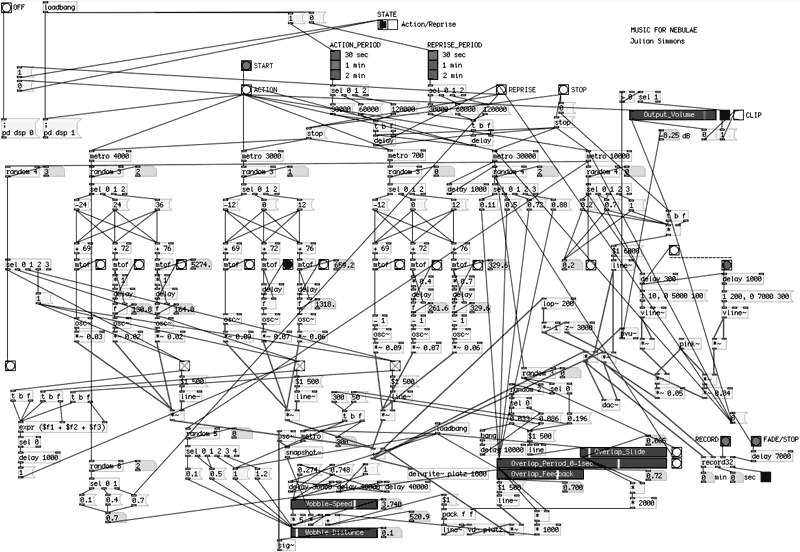
Live Random Intent 2.1 10:27 [result of the first Pure-Data/PD, NUMBERSTREAM masterclasses: ambient organ playing ad-infitum without repetition].
Random Intent: this project started as a back-room diversion from a party. I’d got talking to Don and Ted about creating sounds mathematically, building that math into instruments, then playing it. I deemed a practical exposition should be had.
From a laptop balanced on a sofa, onto an empty PD screen I began to add objects – vigilant they’d not be overly advanced. Mainly this first lesson was about the logic of object connection (initially I constructed a simple calculator to exemplify this). Also the instrument demonstrated the ability of PD to automatically trigger itself: random western-scale frequencies, octaves, chord polyphonies, durations and write-read feedback delays.
Aspects of this randomness stimulated following randomness – the organ is ‘depth connected’ via selectors (aka an ‘Expert System’) – a generative instrument of non-repeating variation …although while having improvising layers it also has the predilection of my preferences – my intent. Anything that sounds like interaction, post-mixing, or overdubbing, isn’t: it’s live random intent.
The initial source of mathematical movement, or disturbance in primary data, had to be nothing more than a basic sine-wave, though 9 of them, 3 groups of 3 working in parallel. Each group forming a chord (the six-pointed stars in screenshot alongside) and each with different durations of refresh: the first chord-group creating long 4sec held drones, the third group with more rapid 0.7sec musical sequences. Each of the chord’s notes rolled-on – an arpeggio played once, with the interval between triggering each note in the chord linked to the frequency of the notes: the higher the frequency the greater the duration of rolling-on.